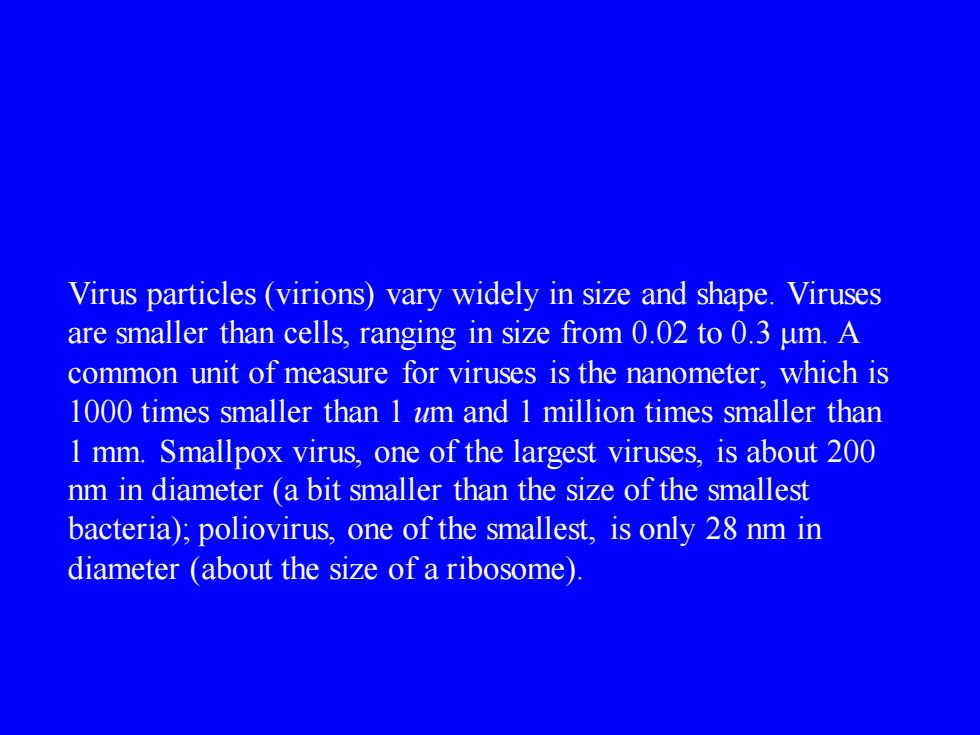正在加载图片...

Virus particles (virions) vary widely in size and shape. Viruses are smaller than cells, ranging in size from 0.02 to 0.3 μm. A common unit of measure for viruses is the nanometer, which is 1000 times smaller than 1 um and 1 million times smaller than 1 mm. Smallpox virus, one of the largest viruses, is about 200 nm in diameter (a bit smaller than the size of the smallest bacteria); poliovirus, one of the smallest, is only 28 nm in diameter (about the size of a ribosome).Virus particles (virions) vary widely in size and shape. Viruses are smaller than cells, ranging in size from 0.02 to 0.3 μm. A common unit of measure for viruses is the nanometer, which is 1000 times smaller than 1 um and 1 million times smaller than 1 mm. Smallpox virus, one of the largest viruses, is about 200 nm in diameter (a bit smaller than the size of the smallest bacteria); poliovirus, one of the smallest, is only 28 nm in diameter (about the size of a ribosome)